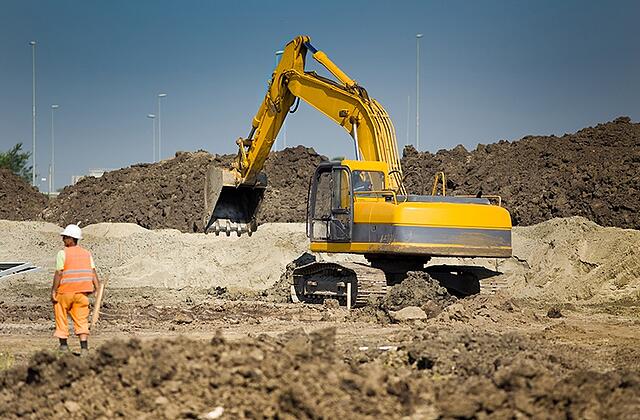Construction sites are often a storm of equipment, materials and people. With moving equipment considered the second most common cause of injury and fatalities on-site, it's important to know what prevention strategies are being successfully used across the industry.
To help you minimise the risk of a reversing incident on-site, here are a few tips you can follow.
- Design or modify your site layout to increase the visibility of workers and civilians moving around the site. You can do this by installing visibility mirrors in smaller spaces or by widening the areas where equipment tend to drive in reverse.
- Reduce blind-spots by making sure that mirrors on vehicles are kept clean and damage-free. A CCTV system or rear-view camera mounted to the vehicle are also being utilised to help the driver see what’s going on behind them.
- When operators cannot see what’s behind the equipment, they should go out of their cab and manually check what’s behind them before reversing.
- Fit your equipment or vehicles with reversing alarms. These alarms should be loud and audible amidst the noise around the job site. Flashing warning lights are used in cases where alarm noises are not audible enough.
- Barriers or buffers should be used on loading bays. These barriers should be highly visible to operators or drivers.
- Plan out and clearly mark areas for reversing such as loading bays.
- Make sure to keep people away from reversing areas if they are not needed.

- Utilise trained signallers on-site to help equipment operators manoeuvre in reverse. Signallers should always stand in a safe position where drivers can see them at all times – wearing high visibility vests are a must. In cases where signallers are not visible, operators should immediately stop the vehicle.
- Use two-way radios or other communication systems to help guide operators when they are driving in reverse.
By completing a risk assessment before breaking ground, you’ll be able to check whether your site is safe and ready to work on. We have created the free downloadable checklist below to help you jump-start your risk assessment.
Author's note: Points on this post were sourced from Health and Safety Executive UK

Related Articles

Tender for $119.6 mil Tasmanian Freight Rail upgrade awarded to VEC Civil Engineering
It's recently been announced that VEC Civil Engineering Pty Ltd have been awarded the single largest tender of the $119.6 million Tasmanian Freight Rail revitalisation project, carrying out the track works for the Melba and Western line.

How to manage the new generation of construction workers
Just as previous generations have contributed to the industry, the current generations have and will too. In fact, millennials will soon overtake the baby boomers as the largest portion of the workforce. So just who are the millennials? And how are they different from preceding generations of construction professionals?

Local QLD company to deliver $14.9m safety upgrade on a section of the Bruce Highway
Works on a $14.9 million safety upgrade on the Bruce Highway between Hebbards Road and North South Road – located just north of Apple Tree Creek – is expected to begin in the coming months.
Get the latest project news
- updates on Australia's pipeline of state and federal projects
- fresh contract awards from major contractors and builders
If you're looking to contact us about other matters, please contact us.



